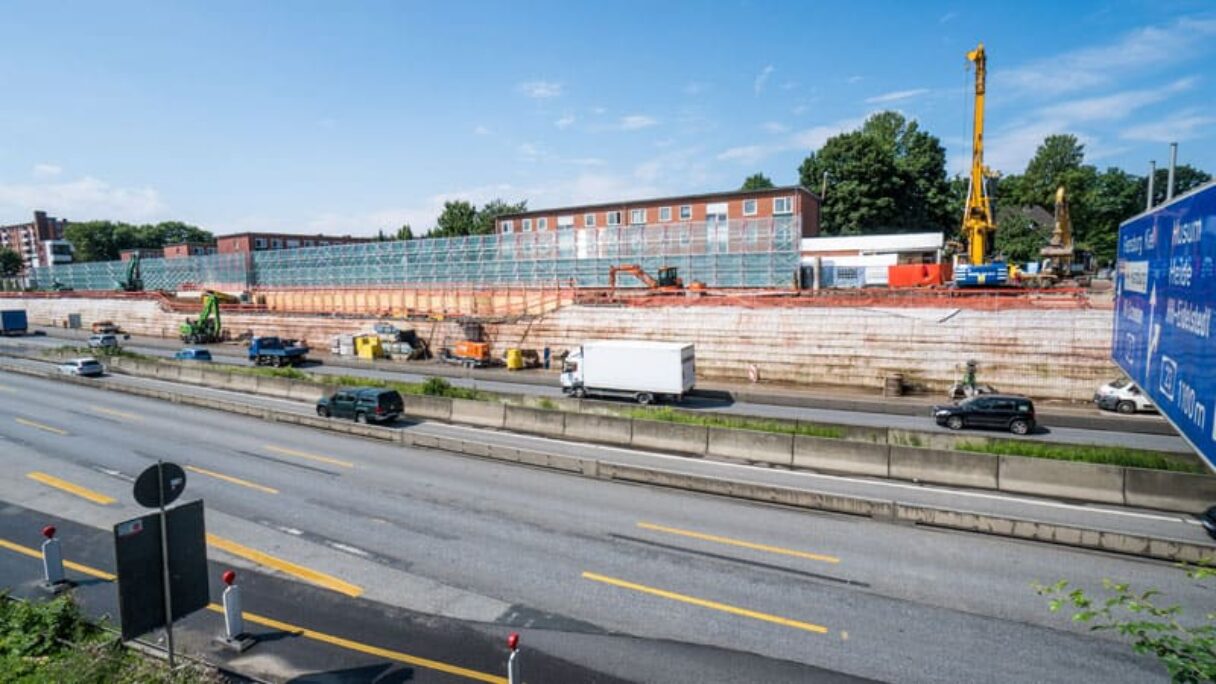Naue m³ STEEL T system enables increased working level along the A7 motorway

On one side the motorway, on the other a bored pile wall, and in between a 5.45m-high working zone with a 110t drill and an enhanced call for safety: The challenge was solved by the Naue m³ STEEL T system, which is a geogrid-reinforced construction with 75° inclination. The City of Hamburg granted the required construction approval on an individual case basis.
A 900m-long section of the A7 motorway in Hamburg’s Stellingen district was being fitted with a noise control system ahead of its future tunnel connection. For a stretch of the construction, a 5.45m-high work zone was required along an existing bored pile wall. The wall provided the existing noise protection. In the work zone, a 110t drilling machine from Bauer Spezialtiefbau GmbH needed to be able to work safely and securely with a confining pressure of up to 800kPa.
The available space for a foundation along the construction zone was severely limited by the proximity of the motorway. Only the road shoulder and side strip were available for construction staging and related traffic. Since the A7’s southbound lanes narrowed immediately past the construction works, it needed to be ensured that the construction would not be endanger passing traffic.
The planners of the ARGE Tunnel Stellingen (Hochtief Infrastructure/Franki Grundbau) opted for a reinforced soil construction with Naue m³ STEEL T. This system allowed the required 5.45m height and, importantly, enabled a space-saving facing (inclined up to 75°) and a condensed construction window.
The infrastructure project owner, DEGES, required a building authority approval for the proposed geogrid-reinforced structure. The City of Hamburg granted the approval, after reviewing the preliminary work of the geosynthetic-engineering specialty firm BBG (Bauberatung Geokunststoffe).
A well-experienced construction company, Tesch Straßenbau, led the way. Secugrid® geogrids reinforced the 0.6m-high horizontal layers. The geogrid was wrapped on the outside and on the inside (envelope method) and anchored back according to design.
The stretched, monolithic flat bars of Secugrid® geogrids, with their welded junctions, are especially suited to reinforcement layers, which made them a strong choice for the project and the STEEL T system.
The visible outer skin of the STEEL T is a steel form lattice with a layer of Secutex® geotextiles inserted. This nonwoven geotextiles separation layer prevents small stones from escaping the reinforced system and disrupting the motorway.
From May to August 2016, approximately 63,000m² of Naue Secugrid® 200/40 R6 and 12,500m² of Naue Secutex® 201
